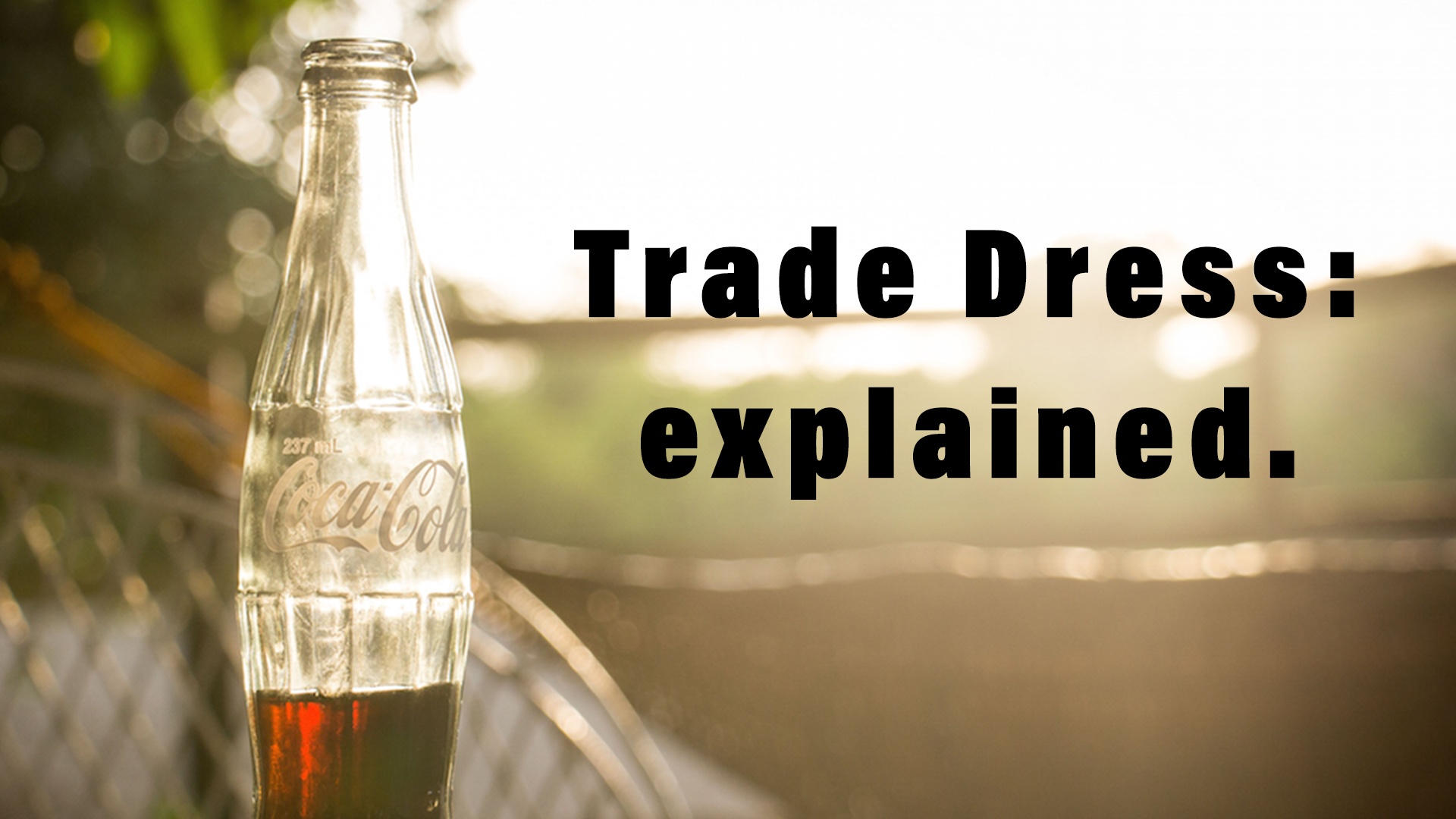
Trade Dress Explained for Sellers: Trade dress is a form of intellectual property that is protected under the Lanham Act and has been defined by the Supreme Court as the “total image and overall appearance” of a good.
Under the traditional view, trade dress only protected the way a product was “dressed up” and solid in the market. The modern standard of trade dressed established by the Court finds features such as size, shape, color, color combinations, texture, graphics, and particular sales techniques are protected under the concept of trade dress.
Trade Dress Explained for Sellers: The principal categories of trade dress are:
- Product packaging
- Product design
- Color
- Business exteriors and interior
- Sounds and scents
Evaluating a trade dress is different than a trademark in that distinctiveness plays a bigger role in prevailing in a trade dress infringement action. Under the Lanham Act, a seller must prove that the trade dress feature is non-functional, that it’s mark is distinctive and that a likelihood of confusion exists between the seller’s product and the infringer’s product. Asserting a trade dress in court also includes all important features and elements of the product a seller wants protected under trade dress. Whether the trade dress is registered or whether the product is being infringed upon or diluted, what relief is available to the seller is all put into consideration as well.
Protectability
Protection under Section 43(a) of the Lanham Act enforces protection for both registered and non registered trade dress, it also requires that the trade dress must be non-functional and distinctive. A functional feature refers to aspects of a product that benefits the consumer rather than a tool of assurance that it is from a certain producer, therefore it is part of the product not branding. For example, the spherical shape of a soccer ball is essential for its use in playing soccer. However, certain colors and designs on a soccer ball could amount to trade dress because these would be non-functional features. Functional product features are absolutely not protectable under the Lanham Act, this is to prevent Sellers from developing monopolies by obtaining trademark protection for functional feature of a product and effectively eliminating the possibility of competition. Therefore, it is important to determine if you want to trademark the purpose of the product you are selling or colors and designs that do not have to do with its use.
Packaging
Packaging is by far the most common category of trade dress and it includes labeling, wrappers, cartons, containers, unique shape and more. If a product’s packaging is distinctive a court will evaluate if it would cause confusion. If the packaging of a product is not distinctive, a court will determine if the type of packaging is custom in the industry. Furthermore, without the industry commonality aspect of a trade dress the packaging could be arbitrary or suggestive rendering it inherently distinctive.
Design
The design of a product is another important feature protected by trade dress and it includes the product’s configuration. Trade dress as product design is incapable of being inherently distinctive and the Seller must provide proof of “secondary meaning.” For example, the stripes on the Adidas logo have acquired protection by trademark because the product designs have established a second meaning. Color combinations can also elevate the level in which a product is protected by trade dress. The aesthetic of certain colors can distinguish one company from another making the color scheme of a company’s product part of it’s branding not it’s functionality.
Exterior and Interior Elements of a Business
Festive and atmosphere-setting aspects of a business’s exterior and interior appearance can be protected under trade dress. The precedent for this category was set out in a case called Two Pesos v. Taco Cabana Inc. In this case, one restaurant claimed another restaurant infringed on its’ trade dress by closely replicating their interior and exterior designs. The Court rules that restaurants layouts such as food preparation areas visible to customers, storage items visible to customers, the tiles on the wall, mirrors placement, and types of chairs can be protected by trade dress. The final category of trade dress protects sounds and scents of a particular good. Examples of these include the NBC chime sound and the scent of yarn, both have been given trademarks by the USPTO.
Trade Dress Enforcement Under the Lanham Act
The Lanham Act protects against infringement and dilution of registered and unregistered trade dress. Registered trade dress infringement is covered by section 32 of the Lanham Act while unregistered trade dress infringement is covered by section 43(a). The majority of trade dress cases deal with products that have not been registered for trade dress.
The basic test for determining whether there is a “likelihood of confusion.” Section 43(s) of the Lanham Act, the likelihood of confusion standard is “if the infringing trademark or trade dress could likely cause confusion, mistake, or to deceive as to the affiliation, connection, or association of such person with another person, or as to the origin, sponsorship, or approval of his or her goods, services, or commercial activities by another person.”The Act does not specify whom likelihood of confusion must apply to, but most federal jurisdictions have favored confusion for the general public, rather than potential customers of a manufacturer or business.
If you have any questions or would like us to assist you in filing for trade dress, call for a free consultation: 1-877-9-SELLER.
Our law firm is geared towards intellectual property and brand protection for the ecommerce marketplace.
GET HELP NOW: We are required by law to assure you 100% confidentiality. We protect your privacy under the Attorney-Client Privilege.
Rosenbaum Famularo, PC, the law firm behind Amazon Sellers Lawyer.


